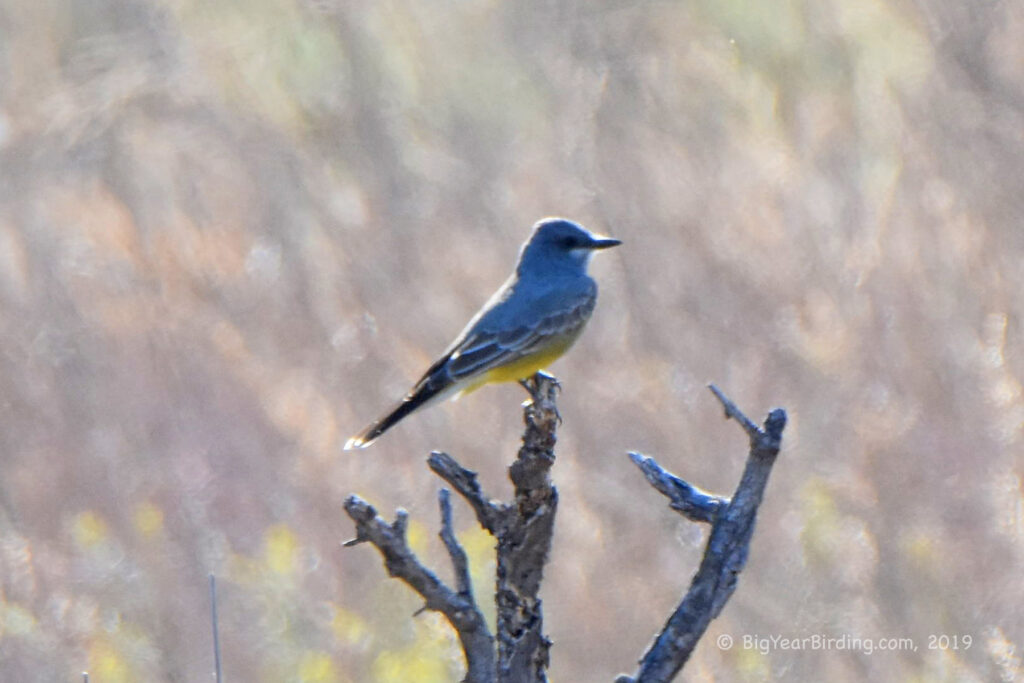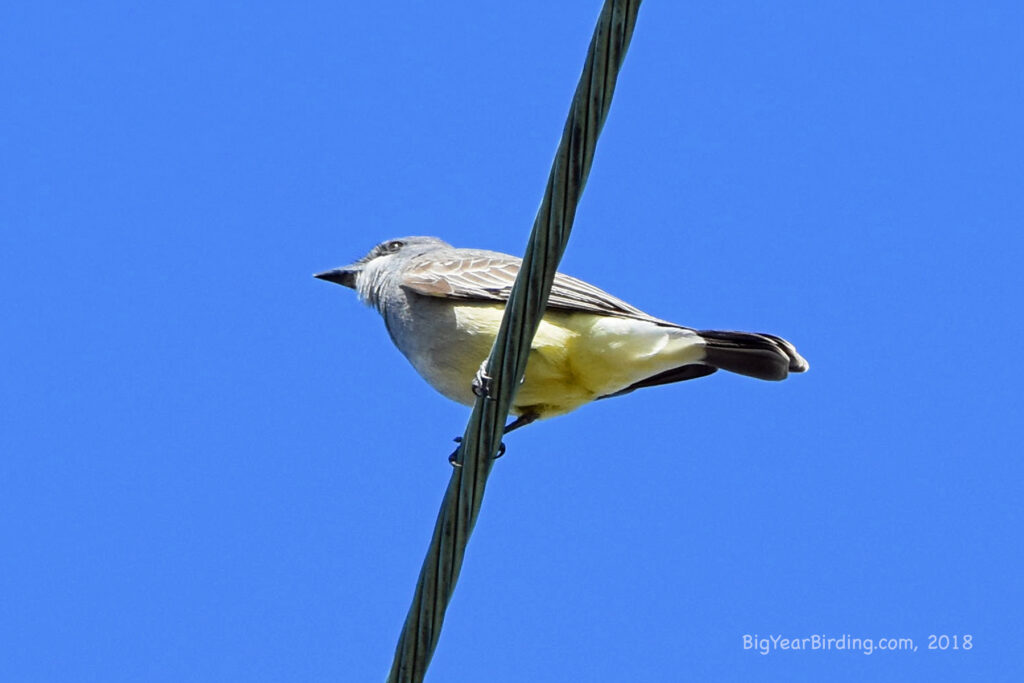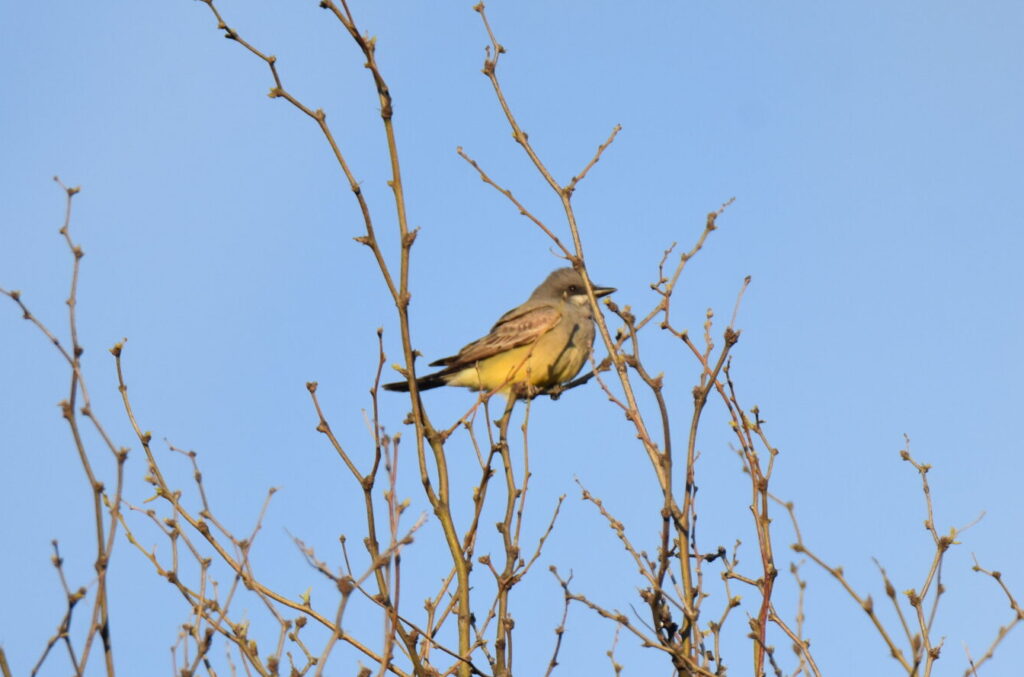
Cassin’s Kingbird is a large, sturdy flycatcher species that measures around 8.5 inches in length and weighs approximately 1.5 ounces. This species is easily identifiable by its striking field marks, including a gray head, back, and wings, a bright yellow belly and throat, and a black mask around the eyes. Additionally, Cassin’s Kingbird has a thick bill, which it uses to catch insects in mid-air.
Cassin’s Kingbirds are primarily found in the southwestern United States and Mexico, where they are resident birds, meaning they do not migrate. However, some individuals have been recorded in the Great Plains and southeastern United States during the summer breeding season. These birds typically inhabit open woodlands, riparian areas, and desert scrublands, where they perch on branches and telephone wires, watching for prey.
One of the most distinguishing features of Cassin’s Kingbird is its distinctive call, which sounds like “pip-pip-pip-pip-pip-pip-pip.” These calls are often heard during the breeding season when males establish territories and females search for nesting sites. Males are also known for their acrobatic displays, during which they hover in mid-air while singing and snapping their wings.
Cassin’s Kingbirds are solitary birds that typically mate for life. They build their nests in trees and shrubs, and females lay 2-4 eggs per clutch. Both parents take turns incubating the eggs and caring for the young. After hatching, the young birds are fed a diet of insects, which they catch with their parents’ help.

In conclusion, Cassin’s Kingbird is a charismatic flycatcher species that is easily identified by its striking field marks, distinctive call, and acrobatic displays. These birds are primarily found in the southwestern United States and Mexico, where they inhabit open woodlands, riparian areas, and desert scrublands. Cassin’s Kingbirds are resident birds, meaning they do not migrate, and they typically mate for life and raise their young together.

